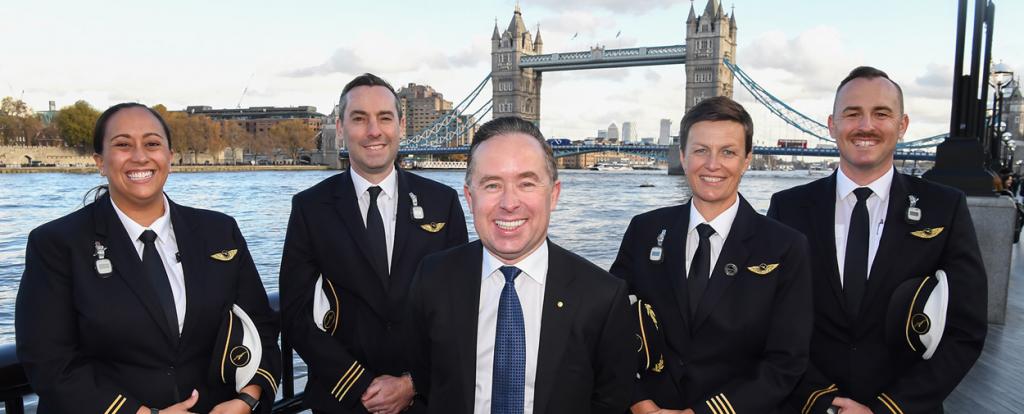
- 2nd of 3 Project Sunrise research flights to reduce jetlag and design optimum crew rest and work pattern
- Builds on learnings from New York-Sydney service last month
- ‘Supper at breakfast time’ among changes to on-board service to help passengers adjust to new timezone
- Almost 100 years to the day that the first London to Australia flight operated
This week’s flight the second ultra-long haul research flight for Qantas, as part of scientific studies into minimising jetlag for passengers and improving crew wellbeing.
The first research flight operated between New York and Sydney non-stop four weeks ago with 49 passengers and crew. It cut around three hours off the typical gate-to-gate travel time of current one-stop flights.
The airline has re-purposed the delivery flights of three brand new 787 Dreamliner aircraft, which would otherwise ferry empty from Seattle to Australia. A third research flight, repeating the New York-Sydney route, will take place in December.
The flight marks only the second time in history that a commercial airline has flown direct from London to Sydney. The first was 30 years ago in 1989, when Qantas operated a 747-400 ferry flight between the two cities. The aircraft that performed that flight (VH-OJA) is now on public display at an aviation museum, south of Sydney.
Researchers from the University of Sydney’s Charles Perkins Centre as well as the Cooperative Research Centre for Alertness, Safety and Productivity (Alertness CRC) will again travel on the non-stop Dreamliner flight to collect passenger and crew data.
The findings from all three research flights will be used to inform future service and product design, aimed at increasing wellbeing and comfort during travel on long-haul flights – in particular the direct flights Qantas hopes to operate on a commercial basis between the east coast of Australia and London and New York.
Project Sunrise Research Flight #2 – London to Sydney
The research flight will carry around 50 passengers and crew in order to give the 787-9 the range required for the 17,800 km flight, expected to take around 19 and a half hours.
While the flight is over 1,500 kilometers further than New York to Sydney, the duration is expected to be similar due to prevailing tail winds between London and Sydney.
All carbon emissions from the research flights will be offset. Qantas recently announced an acceleration of its efforts to reduce its broader carbon footprint, including effectively doubling current levels of flight offsetting, capping carbon emissions from 2020 onwards and totally eliminate net emissions by the year 2050.
The London to Sydney Project Sunrise research flight will operate almost 100 years to the day that the first ever flight from the UK to Australia took off from Hounslow Heath (near today’s Heathrow Airport) on 12 November 1919. It landed in Darwin 28 days later on 10 December 1919.
Airbus and Boeing have pitched aircraft (the A350 and 777X respectively) with the range to operate Project Sunrise flights on a commercial basis. These pitches, together with findings from the research flights and other streams of work, will form part of a business case being developed by Qantas to inform a final yes/no decision on Project Sunrise expected by the end of this year. If approved, flights could start as early as start in 2023.
Qantas has named its endeavor “Project Sunrise” after the airline’s historic ‘Double Sunrise’ endurance flights during the Second World War, which remained airborne long enough to see two sunrises.
Qantas flights to London over the years
| Year | Aircraft | Stops | Flying Time |
|---|---|---|---|
| 1947 | Constellation | 6 Darwin, Singapore Calcutta, Karachi Cairo, Castle Benito (Libya) |
55 hours (across 5 days) |
| 1969 | Boeing 707 | 3 Singapore Calcutta Rome |
28 hours (across 2 days) |
| Today | Airbus A380 | 1 (Singapore) | 22 hours, 20 mins |
| Today | Boeing 787-9 | 0 (London-Perth direct) | Approx 17 hours |